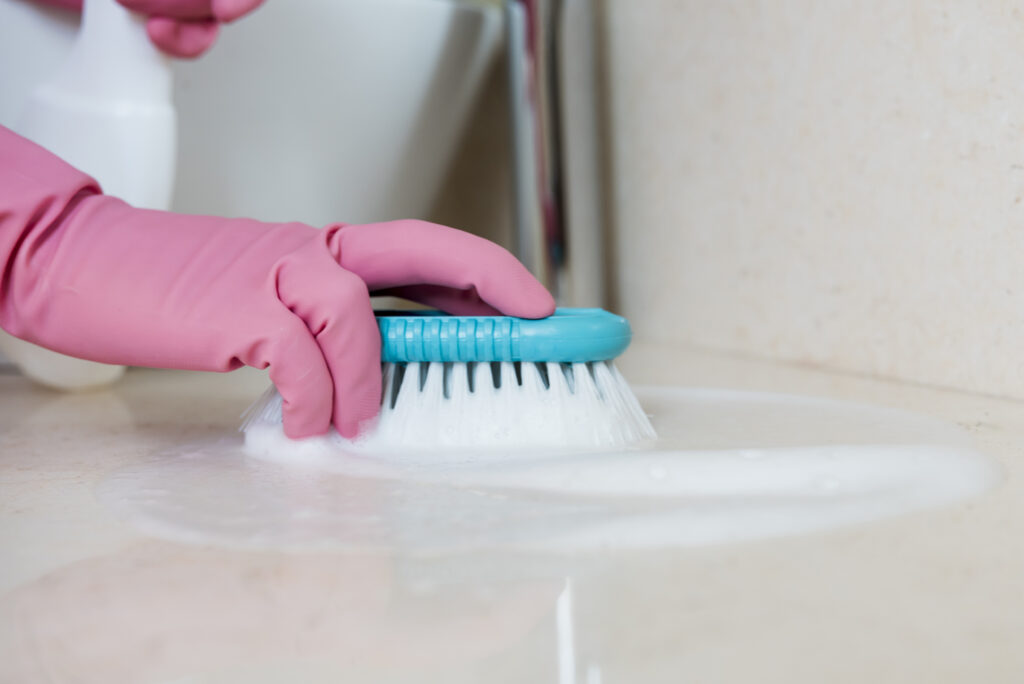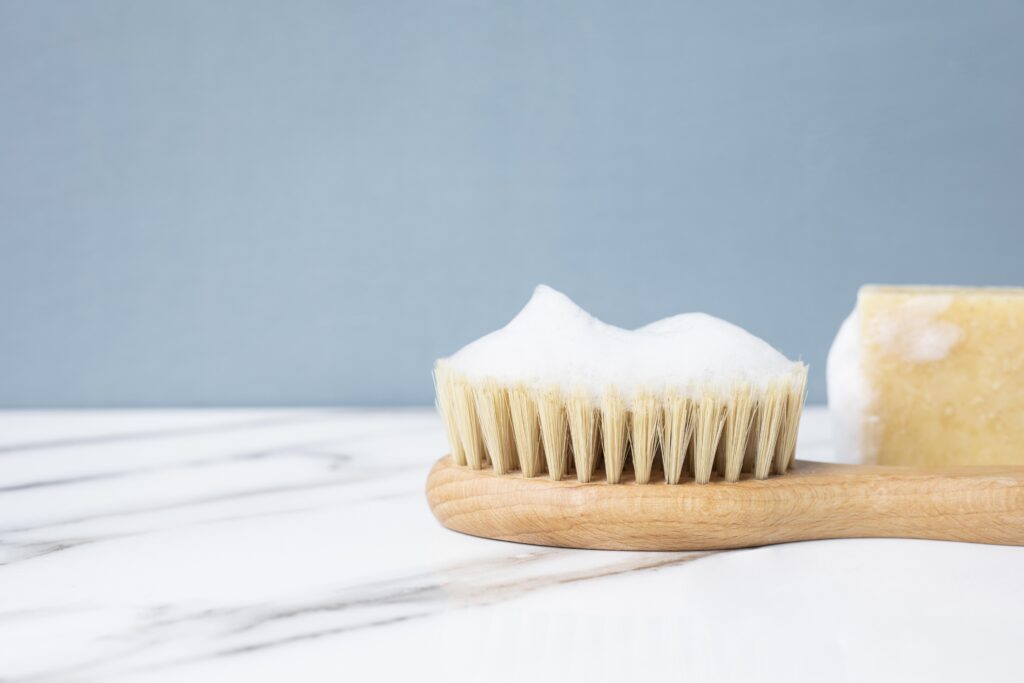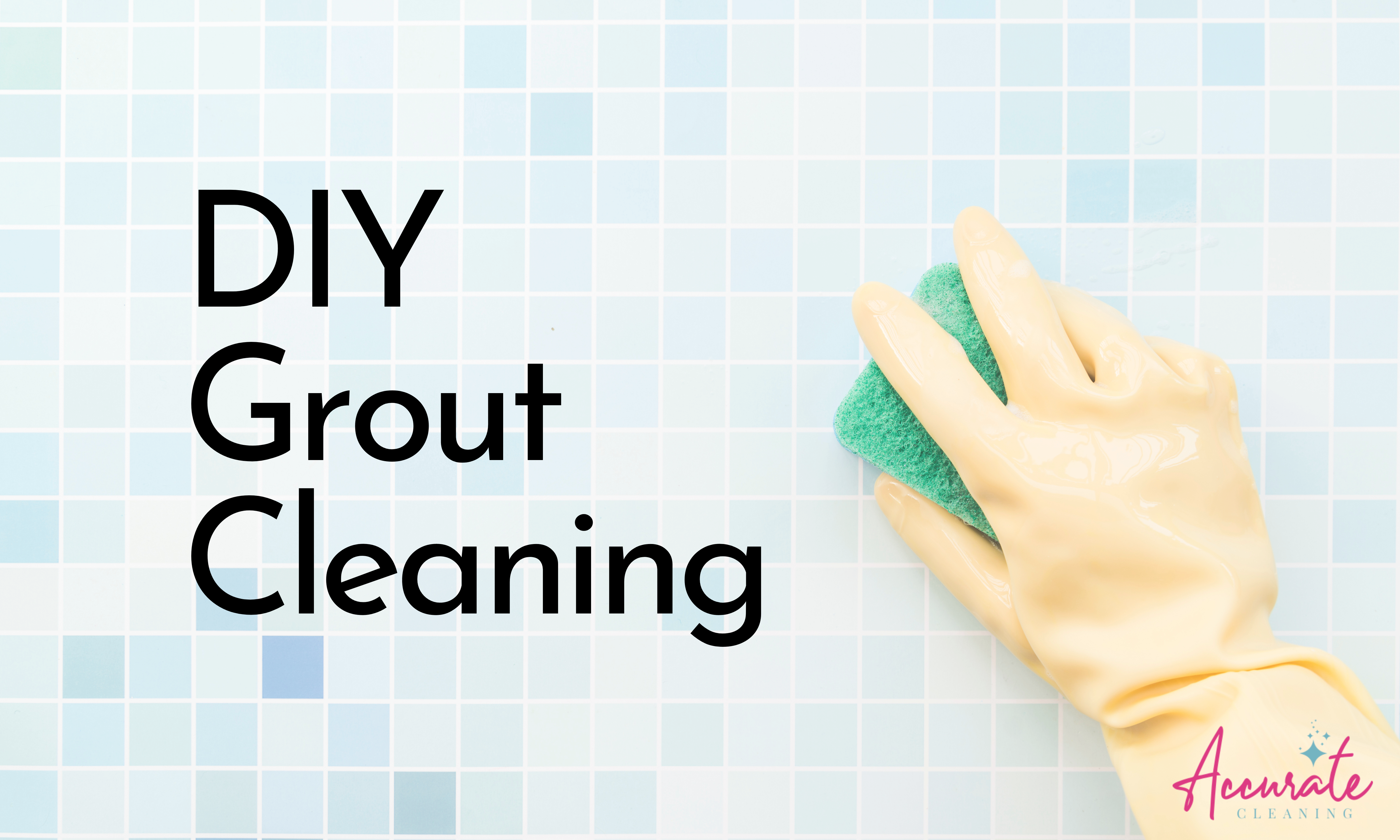Keeping your grout clean and well-maintained is essential for maintaining a beautiful and hygienic home. Dirty grout can not only make your floors and walls look unsightly but can also harbor bacteria and mold. While professional grout cleaning services are available, they can be expensive. Fortunately, there are cost-effective and eco-friendly DIY grout cleaning solutions using household items that you can try yourself.
Understanding the Basics of Grout Cleaning
Grout is a mixture of cement, sand, and water used to fill the gaps between tiles. Over time, grout can become dirty and stained due to everyday use, spills, and general wear and tear. Dirty grout not only looks unappealing but can also trap dirt, debris, and germs, making it difficult to clean. Regular grout cleaning has numerous benefits, including:
- Improved aesthetics: Clean and well-maintained grout enhances the overall appearance of your floors and walls.
- Extended lifespan: By removing dirt and stains, regular cleaning helps prevent damage and extends the life of your tiles.
- Healthier environment: Dirty grout can harbor bacteria, mold, and allergens, which can negatively impact indoor air quality. Regular cleaning helps create a healthier living space for you and your family.

How to Revive Your Grout: Surprising Household Hacks
Tired of dingy grout lines that seem impossible to clean? You don’t need to resort to expensive cleaning products or professional services to make your tile grout sparkle again. In this section, we’ll explore five surprising household hacks that can help you achieve impressive results with minimal effort. These do-it-yourself remedies are not only effective but also budget-friendly, using common items you likely already have at home. Now that we have discussed the topic, let’s take a look at how to revive your grout.
1. Vinegar and Baking Soda Mixture
To prepare this effective grout cleaner, you’ll need a spray bottle filled with equal parts white vinegar and water and a small bowl of baking soda.
Apply the vinegar and water mixture generously on the grout lines and then sprinkle baking soda over it. Allow the mixture to bubble and fizz for a few minutes before scrubbing it with a brush or sponge. Finally, rinse the area with warm water.
Vinegar is a natural acid that helps dissolve dirt and stains, while baking soda acts as a gentle abrasive to remove grime from grout lines.
2. Lemon Juice and Salt Scrub
Still unsure on how to revive your grout? Try creating a natural grout cleaner by mixing lemon juice and salt. Squeeze fresh lemon juice into a small bowl and add enough salt to form a paste-like consistency.
Apply the lemon juice and salt scrub onto the grout lines and let it sit for a few minutes. Then, use a brush or sponge to gently scrub the grout. Rinse the area thoroughly with water to remove any residue.
Lemon juice is acidic and acts as a natural bleaching agent, while salt helps to break down dirt and grime. Together, they create a powerful grout cleaning solution.

3. Hydrogen Peroxide and Dish Soap Solution
Mix equal parts hydrogen peroxide and liquid dish soap in a spray bottle. Spray the solution onto the grout lines and let it sit for 10-15 minutes to allow it to penetrate deeply.
Using a brush or sponge, scrub the grout lines until they are clean. Rinse the area thoroughly with water.
Hydrogen peroxide is a mild bleach alternative that effectively removes stains and disinfects grout. Dish soap helps to break down dirt and grease, making it easier to remove.
4. Steam Cleaning with a Household Iron
Fill your household iron with water and set it to the steam setting. Run the steaming iron over the dirty grout lines using slow and controlled movements.
Be sure to keep the iron a safe distance from any surfaces that may be damaged by heat or moisture. Always follow the manufacturer’s instructions for your specific iron model.
The steam from the iron helps to loosen dirt and disinfect the grout, making it easier to remove stains. This method is particularly effective for large areas of grout.
5. Toothbrush and Baking Soda Paste
Mix baking soda with water to create a thick paste and apply it to the grout lines using a toothbrush. Use the toothbrush to scrub the grout, paying special attention to small and hard-to-reach areas.
Rinse the area with warm water to remove the paste and any loosened dirt and grime.
The abrasive properties of baking soda combined with the precision of a toothbrush make this method ideal for detailed grout cleaning. It is especially useful for tight spaces and intricate tile patterns.

Frequently Asked Questions about DIY Grout Cleaning
Can I use bleach on grout?
Bleach can be effective in removing stains from grout but should be used with caution. It can discolor certain types of grout and should not be used on colored or delicate tiles.
How often should I clean my grout?
The frequency of grout cleaning depends on factors such as foot traffic, spills, and overall cleanliness. It is generally recommended to clean grout at least once every three to six months.
What are the benefits of natural grout cleaners?
Natural grout cleaners are eco-friendly alternatives to harsh chemicals. They are safer for your health, prevent damage to your tiles, and reduce environmental impact.
Should I seal my grout after cleaning?
Applying a sealant on clean grout helps to protect it from stains and makes future cleaning easier. Consult the manufacturer’s guidelines for the appropriate sealing products for your grout.
Is professional grout cleaning necessary?
While DIY solutions can be effective, professional grout cleaning services offer deep cleaning and specialized equipment for tackling stubborn stains and deep-seated dirt. Consider professional cleaning for heavily stained or hard-to-clean grout.
The Next Step: Maintaining Clean Grout
To maintain clean grout, incorporate routine cleaning practices such as sweeping or vacuuming regularly to remove dirt and debris. Wipe up spills promptly to prevent staining, and avoid using abrasive cleaners that can damage the grout. Additionally, using sealants periodically helps to protect grout from future stains and discoloration.
Conclusion
Reviving your grout doesn’t have to be a daunting task. These household hacks using common items like vinegar, lemon juice, hydrogen peroxide, baking soda, and even a household iron can help you achieve clean and beautiful grout. By following these DIY grout cleaning solutions and maintaining a regular cleaning schedule, you can enjoy a clean and healthy home environment without breaking the bank. So give these surprising household hacks a try and see for yourself how to revive your grout!


